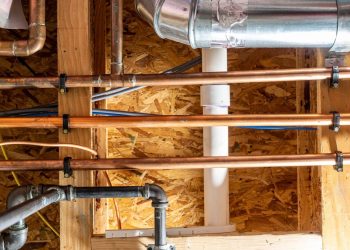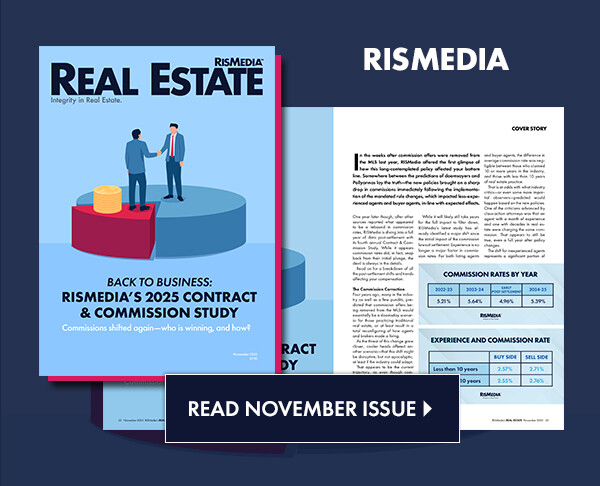Federal Reserve Chair Jerome Powell faced intense congressional scrutiny this week over the housing market and his approach to interest rates.
Testifying before the Monetary Policy, Treasury Market Resilience, and Economic Prosperity Task Force on Tuesday and before the Senate on Wednesday, Powell was pressed on tariffs, mortgage rates, the housing market and his unwillingness to lower rates despite the president’s persistence.
During Powell’s testimony on Tuesday—when asked about a previous unexpected rate cut back in September 2024—he summarized his viewpoint on cutting rates, over criticism.
“At the end of the day, we do what we think is the right thing when we think it’s the right thing to do. We don’t take into consideration political factors,” Powell said. “If we start doing that, I don’t know where that stops.”
When it comes to cutting rates this time around, Powell reaffirmed his wait-and-see approach, with an exception.
“A substantial majority of the committee has written down rate cuts in the remaining four meetings this year, so it’s just a question of being prudent and careful—but at a time when the labor market is still strong,” he explained. “We don’t see weakness in the labor market. If we did, that would change things…we’re going to continue to adapt as the data adapts.”
Political pressure mounts
Ahead of Powell’s Senate testimony, Bill Pulte, director of the Federal Housing Finance Agency (FHFA), called for the Fed Chair’s resignation through an X post. U.S. Vice President J.D. Vance also had Powell on his mind ahead of the Senate testimony.
“I’d love to hear an argument for why Powell cut rates 50 points right before an election, but can’t do it now with inflation lower,” Vance posted on X.
President Donald Trump posted about “Too Late Powell” on Truth Social ahead of the semiannual testimony.
“I hope Congress really works this very dumb, hardheaded person over,” Trump wrote. “We will be paying for his incompetence for many years to come.”
Representative Juan Vargas (D-CA) asked Powell Tuesday whether or not Trump could appoint himself as the next Fed chair.
Powell ultimately told the representative that the requirements include being nominated by the president and confirmed by the Senate, but declined to provide more commentary beyond that.
Lowering rates
When asked by Senator Bill Hagerty (R-TN) what factors would put him in a positon to lower rates, Powell said the factors that would help would be reducing uncertainty and finalizing the tariff rates.
Referring to FHFA’s Pulte and the various times he’s asked Powell to lower interest rates, due to its impact on homebuyers, Congressman Bill Huizenga (R-MI) asked Powell about the driving force behind the Fed’s refusal to lower rates.
By just looking in the rearview mirror and the existing data, there’s a good argument for the rates to be at a neutral level, which would be a couple of cuts, maybe more, answered Powell.
“The reason we’re not is the forecast,” he said. “All professional forecasters that I know of, on the outside and (at) the Fed, do expect a meaningful increase in inflation over the course of this year.”
Housing crisis takes center stage
Multiple lawmakers pressed Powell on housing affordability and the Fed’s role in addressing the crisis.
Diving into inequities in housing, Congresswoman Rashida Tlaib (D-MI) told Powell that about 50% of Black women in Michigan’s two largest counties have experienced some sort of eviction in their lifetime. Further, Michigan has lost more Black homeownership than any other state in the country during the last recession, she said.
“While there are many factors in play…high mortgage rates, the finance rates and so forth, the supply of new housing, last month, hit a five-year low…It sets the market up for higher inflation and more burdensome housing costs,” Tlaib said.
Powell acknowledged that there’s a longer-run shortage of housing, but also said the Fed can’t do anything about it.
“In the short run, rates are high, and that’s going to weigh on housing activity, but the best thing (the Fed) can do for the housing market…is to restore price stability, so that rates come down and rates can be at a level that people can afford,” Powell said.
Housing, and other intrasensitive sectors, said Powell, are very much directly affected when the Fed cuts or raises rates, but that is part of the mechanism for restoring general price stability.
Related: Here’s What Moves Mortgage Rates—and Why It’s Not Always the Fed
Seemingly frustrated, and claiming there were “raised eyebrows” in the audience based on this answer, Tlaib explained that the housing crisis is getting worse and is being impacted by the Fed’s current framework.
Powell reaffirmed that restoring price stability at the aggregate level will be the best thing for homeowners and for homebuilders and everybody else. “In the long run, that is the single thing that Congress has ensigned us to do,” he said.
Congressman Bryan Steil (R-WI) also focused on higher rates and how they are impacting the housing market, asking Powell to explain his analysis of the impact housing and shelter costs have on families and on inflation, paired with his desire to maintain price stability.
In terms of inflation, the Fed looks at owner’s equivalent rent and rentals—meant to capture both rented and owned housing—and it’s been “one of the stickiest parts of inflation,” Powell said.
Again, Powell reaffirmed the importance of price stability and letting the market work. “Even then, though, we’re still going to have a housing shortage,” he said.
Focusing on economic inequality, Congresswoman Nikema Williams (D-GA) said her district has one of the widest racial wealth gaps in the country, which comes back to the housing crisis. She asked Powell what impact interest rates have on the housing market.
“Interest rates really affect housing demand. So, with lower rates, you see more demand, and with higher rates, maybe less demand,” Powell said.
When it comes to housing, Americans are stuck, unless they want to give up their low rates, said Representative Marlin Stutzman (R-IN).
Acknowledging this lock-in effect, Powell told the representative that the best thing the Fed can do to address this is to get inflation sustainably down to 2%, and have it stay there for a long period of time.
“We only have one tool for the whole economy, not just for housing, so it’s something we consider, but we have to consider the bigger picture,” he said. “In the medium term, as rates come down, you’ll see normalization in housing. Of course, there will still be a national housing shortage.”
Tariffs
Senator Pete Ricketts (R-Nebraska) pressed Powell on tariffs, asking if prices went up due to tariffs, wouldn’t it be a “one-time event,” since they would be baked into the price afterwards.
Though it might be a one-time increase, said Powell, it could still be inflationary.
“One time could be the base case, but in a situation like this, when the process could go on for a long time, where the effects could be large or small—it’s just something you want to approach carefully in a world where inflation is not back to 2%.”












